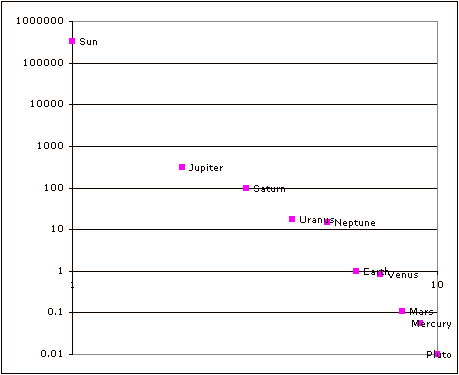
I’ve never been to a rave and I don’t really want to but I saw one in that horrible movie. Who’s in charge? It is a question that comes up.
When people ask that about open source I like to tease them. I say it’s kind of like what happens if you put a bunch of people together in any group. Pretty soon they all start spontanously dressing a like, using the same cliches, making fun of people outside. It’s in the nature of things, like the rythmic clapping of an audience. I gather that rythmic clapping is somewhat more common in European audiences than American ones.
Standard behaviors can emerge entirely bottom up. Fact is, given the way that power-law network tend to emerge out of all kinds of unregulated linking up, I’m beginning to think it’s more the rule than the exception.
It’s actually kind of amazing the way a lot of open source projects seem to
spontaneously organize. You create a body of code; you add a half a dozen interested parties; after a bit they all start rattling around in something that approaches – just a bit – a synchronized manner. Who’s in charge? The code repository?
In the fractal nature of these kinds of discussions I got to noticing this at three scales all at the same time. First you have the ongoing to-and-fro-ing about “what is a blog.” Which is of course the conversation about what is the emerging standard blog. Second you have the question as it applies to an indivdual and his blog. There you might call it “finding your voice.” Some people’s voice is long tedious essays; others are tightly written humorous observations; some like to write little provocative Zen koans; while yet others have found a voice that consists of just revealing a stream of URLs they find interesting. Part of the tension in the “what is a blog” conversation arises from the way it does the violence of catagorization to individual voices. Who in charge? Where to you get off announcing that the annual christmas letter isn’t a form of blogging.
Group blogs are an fun kind of intermediate level. It’s the middle class! Sometimes easy going, tollerant, urban. Sometimes uptight, gated community, suburban. I’d not noticed the way that if you look at a few group blogs; like many-to-many or crooked timber you can clearly see that the particpants have begun to adopt a similar voice. Comming to them fresh you might assume that they gathered together because they shared a common voice; but if you read some of their individual writing from years past you notice that they had either wider ranges or even entirely different centers of mass. I suspect if you just measured the size of the postings you’s see a kind of learning to clap in unison begins to emerge.
Over on the brand spanking new Planet Apache this process is particularly stark. First off we have a mess-o-people posting how have already developed a voice over the last few years. Second we are aggregating those entirely automaticly from their individual blogs; so to first order there is no reason to expect these voices to begin to standardize. Third the Apache communities I’ve particpated in have been particularly good at remaining both tolerant and diverse – which would suggest there is less social pressure toward a common voice. It’s very much in the best interest of a healthy open source project to remain like that; otherwise you make it a lot harder to bring on new blood. But then on the otherhand the Apache communities I’ve particpated in have been extremely narrowly focused, very much communities of limited liablity. That’s because they focus down onto the working code; often have no other scope. That suggests two things; that these folks have a strong expectation that planet apache will focus down on something, probably the work of the various projects, and secondly that these folks aren’t fluent in what happens if you don’t limit the liablity.
I have good friend who drew my attention to a behavior he calls “monkey see monkey do;” i.e. that we primates like to try things. We watch the other monkeys and then we go “Oh, that looks like fun. I think I’ll try that!” And, it is fun. I certainly tried blogging for much those same reasons.
It will be interesting to see what happens at planet apache. Maybe we will wander into a common voice there. Maybe we will remain “just a bunch a guys.” Maybe some people will choose to submit a partial feed of their own blog not because there are guidelines for the planet’s content but because they decide they want to avoid the subtle temptation to conform any conventions that might begin to emerge there. Certainly some people like to settle into a framework. Who knows?
Hopefully we won’t be tempted to answer the question: “Who’s in charge!” Or was Mark Slemko once so wisely said: “That would be wrong, except when it’s not.”


